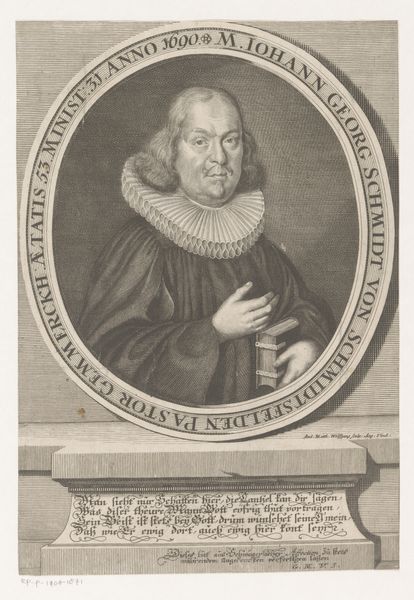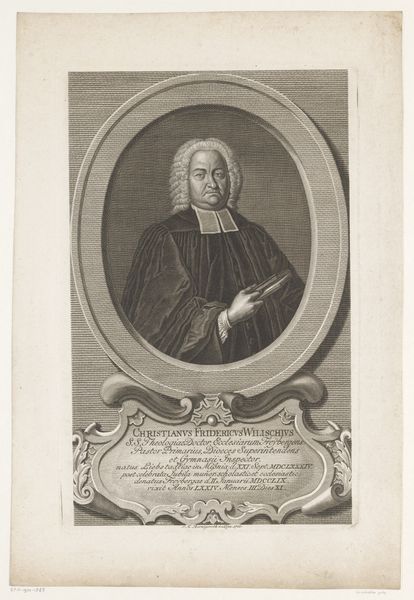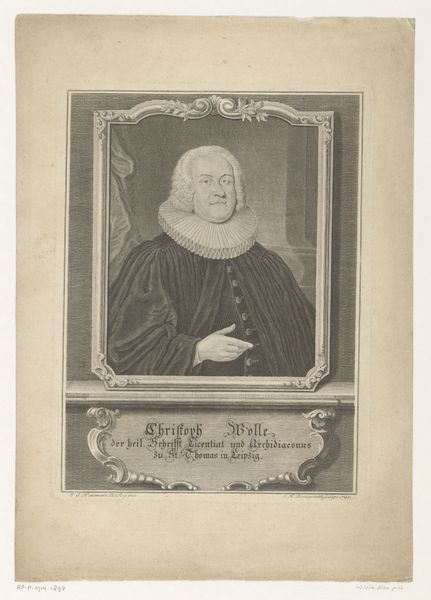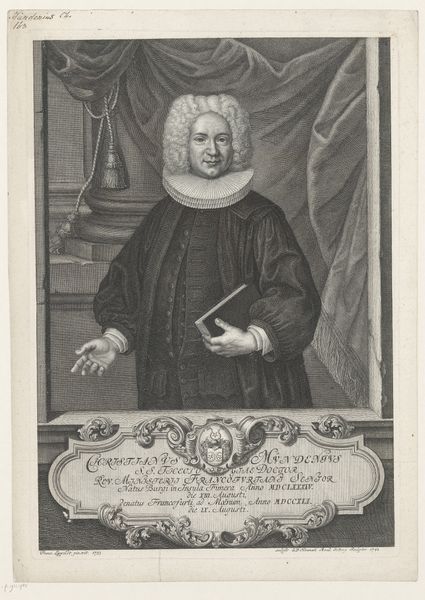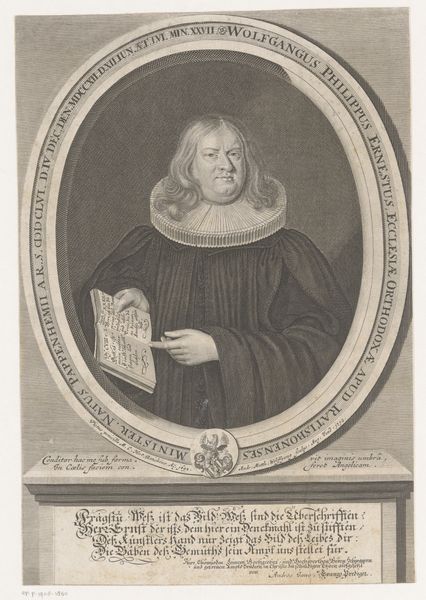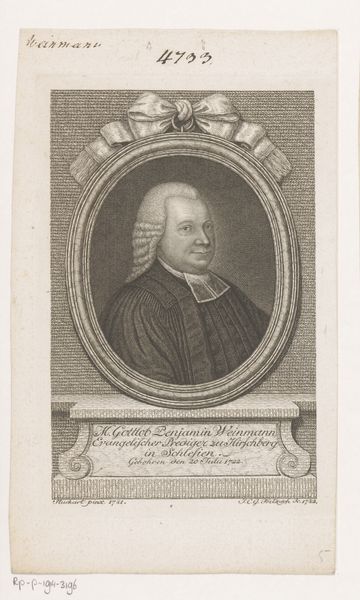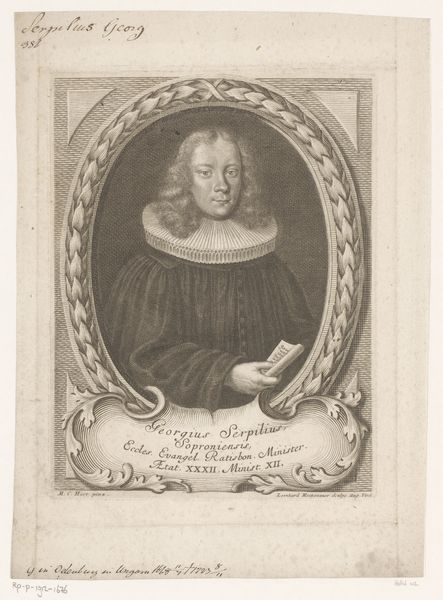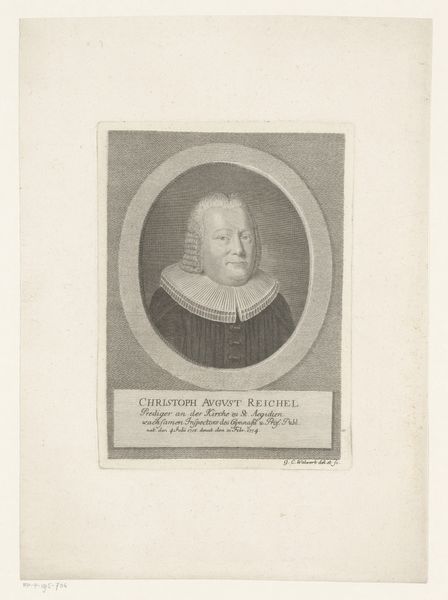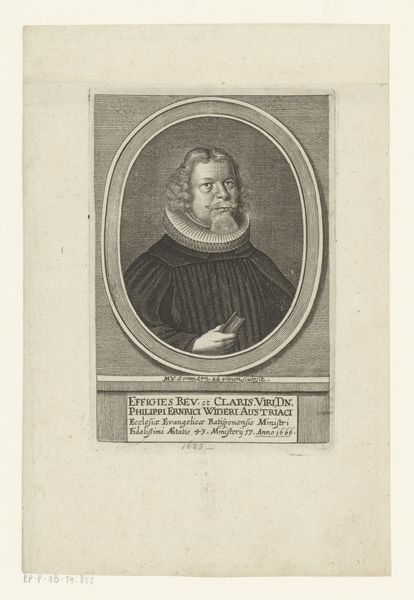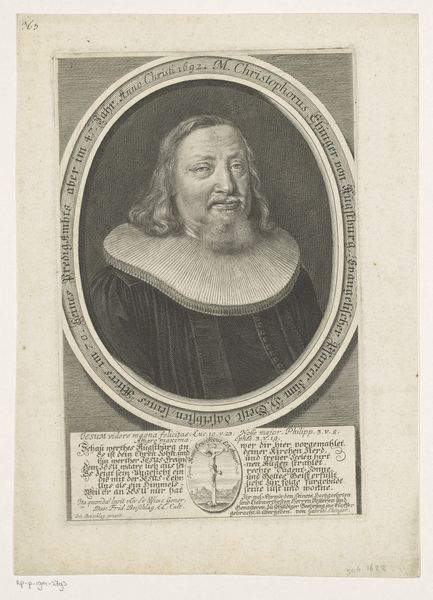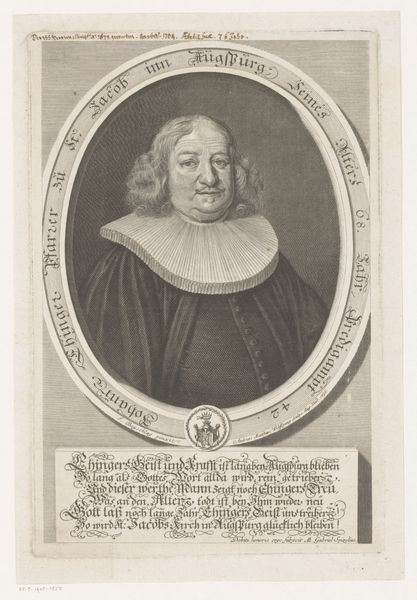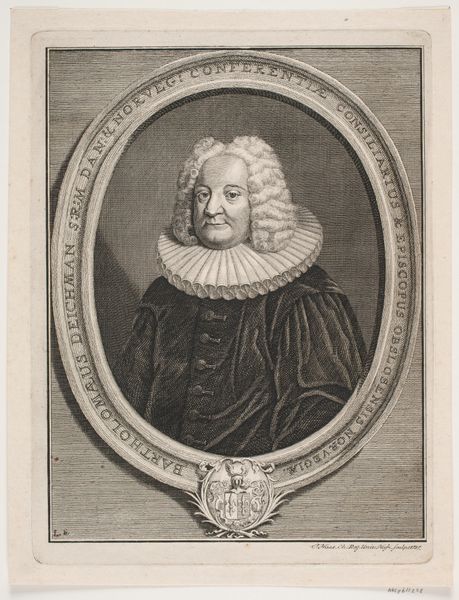
print, engraving
#
portrait
#
baroque
# print
#
engraving
Dimensions: height 298 mm, width 208 mm
Copyright: Rijks Museum: Open Domain
Editor: Here we have a Baroque engraving from 1760, "Portret van Johann Albrecht Vogel," by Johann Wilhelm Windter, currently at the Rijksmuseum. The subject's elaborate collar and gesture strike me as conveying a sense of formality and perhaps intellectual authority. How do you interpret this work, especially considering its historical context? Curator: It's interesting to consider the print's function within the social landscape of the 18th century. Engravings like this, especially portraits, played a key role in constructing and disseminating social identities. Consider the inscriptions framing the sitter—how might this portrait contribute to the subject's public image? And to whose consumption would this portrait cater, and where might it be displayed? Editor: Presumably for people who knew of Vogel, or people of some rank. Does the presence of text indicate that he was probably some kind of academic or scholar? Curator: It's more than likely. The inclusion of extensive text certainly elevates him beyond the realm of mere merchant. And how does the very *style* of Baroque portraiture – with its emphasis on detail and dignified pose – reinforce social hierarchies? Does the artistic style act as an emblem of societal norms and power structures? Editor: It’s almost like a Baroque profile picture—it tells you something about their importance. Maybe about what they want to convey about their importance, which might or might not be accurate. Curator: Precisely. Prints democratized imagery in a way that painted portraits didn’t, yet they still upheld existing societal frameworks. Examining how institutions like academies promoted specific artistic styles offers us clues to the values they sought to perpetuate through representation. Editor: That’s a really interesting angle—to think about artistic style not just as aesthetics, but as an extension of cultural power. I’ll definitely keep that in mind. Curator: Exactly! Considering these aspects offers fresh ways to understand this seemingly straightforward portrait, positioning it within broader discussions about social history.
Comments
No comments
Be the first to comment and join the conversation on the ultimate creative platform.
